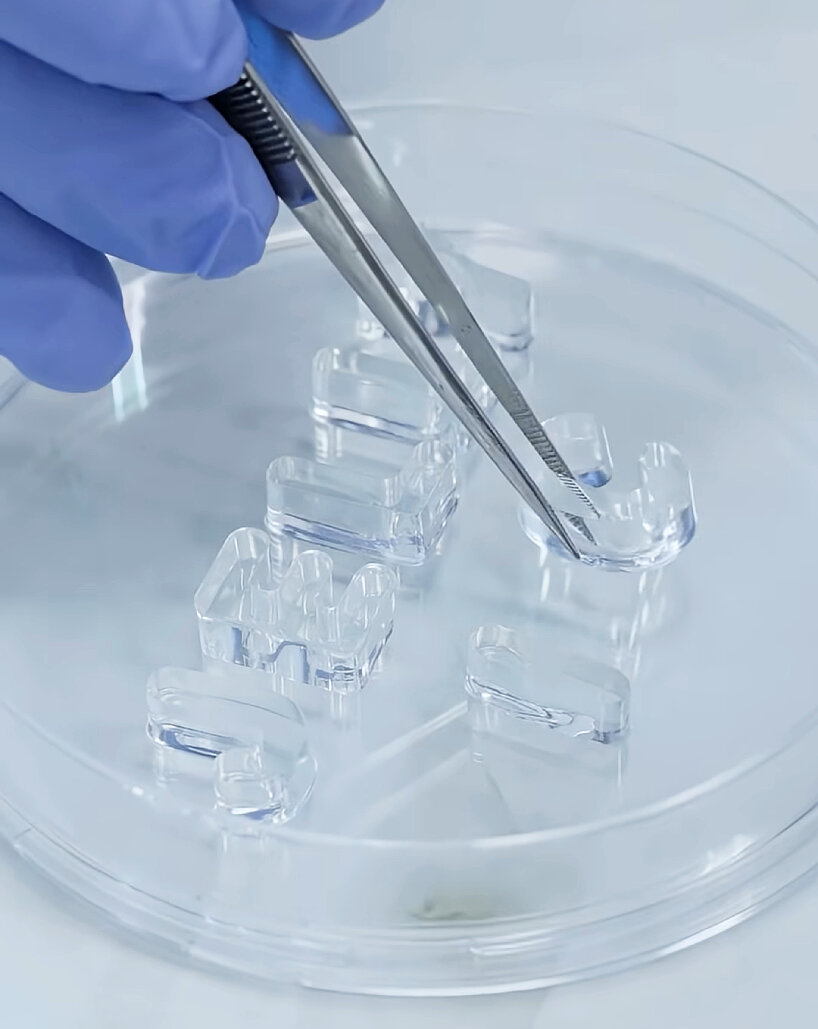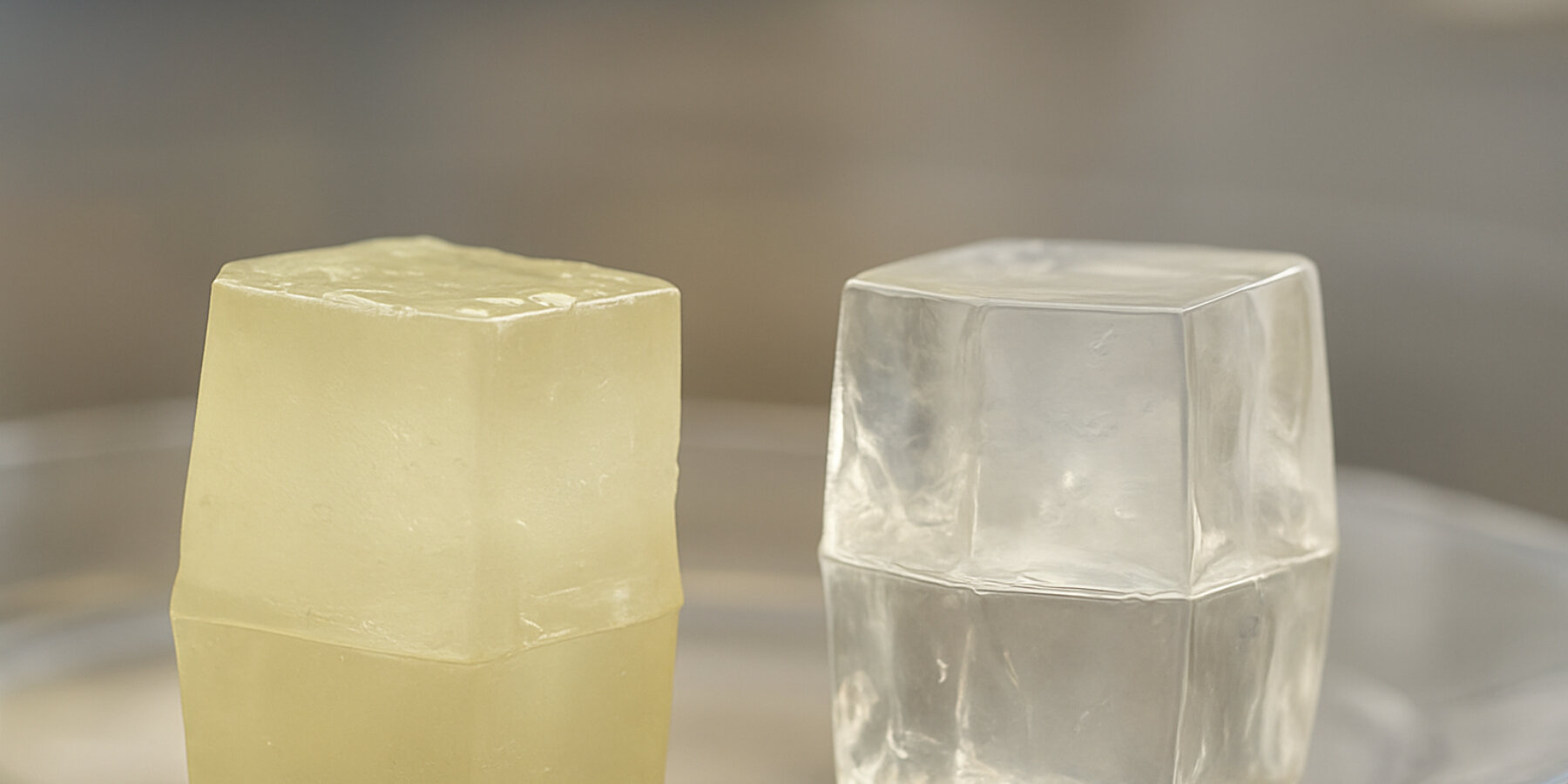Jelly Ice: The Techno-Miracle Nobody Asked For But Everyone Pretends to Love
Hello everyone. Today’s scientific sideshow comes dressed as dessert, and no, it’s not some culinary revolution from the Food Network, it’s called “Jelly Ice.” A gelatin-based reusable ice cube that apparently thinks it’s cooler than regular ice because science glued proteins together in a hydrophobic cosplay session. Supposedly, this stuff is 90 percent water, 10 percent gelatin, and zero percent sanity. Yes, what we needed in 2025 wasn’t competent politicians or games without predatory monetization – no, we desperately needed high-tech Jell-O cubes to keep our shrimp cold at the local supermarket. Marvel at progress, dear viewers, marvel at it.
Let’s Start With the Gimmick
The research team at UC Davis rolled this out during the ever-thrilling American Chemical Society meeting. Nothing screams groundbreaking like someone standing at a podium saying, “Ladies and gentlemen, behold – gelatin cubes! They don’t melt, sometimes jiggle, and probably make your salad bar feel like a middle-school cafeteria science fair.” Supposedly, jelly cubes “trap water molecules in tiny spaces,” which sounds a lot like saying they prevent your ice cube from doing exactly what ice cubes are supposed to do – melt. The gimmick is obvious: reusable ice that doesn’t turn into a soupy bacterial slip ’n slide at the bottom of a fish display. And credit where credit is due: that part actually makes sense. But here’s the kicker – it only absorbs about 80 percent of the heat of a regular ice cube the same size. Translation: It’s like buying a graphics card that runs about 20 percent slower than the last-gen model, but hey, at least it looks shiny on Instagram.

From Frozen Tofu to Revolutionary Jelly
The origin story of Jelly Ice reads like an indie game developer’s sob story pitch on Kickstarter. Food scientist Luxin Wang noticed ice cubes creating bacterial cesspools in store seafood cases and thought, “What if… frozen tofu?” I mean, of course tofu was involved. It’s the bland filler protagonist of this science saga. Turns out tofu could hold water but then, oh shock of shocks, it released it when it thawed. Who would’ve thought? That’s quite literally what ice itself does. So, the tofu quest failed – insert sad side quest music here – and our researchers pivoted to gelatin, a material they already use for middle-aged health drinks and questionable gummies. Gelatin, being a protein mesh, gave them exactly what they wanted – a hydrophobic cage to trap all that wiggly liquid. So here we are, ladies and gentlemen: all of human history, all of our progress, culminating in a glorified Jell-O shot that doesn’t dissolve in your rum and Coke.
Wash, Rinse, Repeat – The Ice Cube as a Tamagotchi
Apparently, you can wash these gelatin monstrosities in bleach or water after use, which means-brace yourselves-you now have chores for your ice cubes. Who asked for this? Who ever said, “You know what’s fun? Washing and babysitting my ice after every freeze-thaw cycle”? Normal ice, on the other hand, doesn’t demand attention. It just sits there, melts, and minds its business. Now, instead, we’ve inserted yet another little chore into your life – because the tech world can’t give you an app you actually need, but it can give you gelatin cubes that need parenting.
Oh, and these cubes break down completely over time into compost. Good for tomatoes, apparently. That’s right, your frozen Jell-O ice packs double up as secret tomato growth hormones. Honestly, if this wasn’t real research, it would sound like a side quest in a farming sim RPG: “Plant composted gelatin cubes to improve tomato yield.”
Functionality or Food Fad?
Here’s where the marketing fantasy kicks in. Yes, Jelly Ice can work through many freeze-thaw cycles and replaces single-use gel packs for medical shipping, biotech, and food preservation. Sounds noble at first glance. But then you realize you’re literally pitching “ice that doesn’t melt” as if it were the cure for cancer. It’s a patch solution, not a revolution. And considering how many industries somehow survive by just using regular ice or dry ice, forgive me for not rushing to preorder my Jelly Cubes collector’s edition pack.
We’ve entered a new timeline, folks – one where washing your ice cubes is considered innovation.
Gaming, Science, and the Grand Conspiracy of Pointlessness
Think about this: it’s 2025, and we’re still trying to disguise trivial conveniences as epic scientific breakthroughs. Ice cubes that don’t melt – it’s the gaming equivalent of those season passes filled with cosmetic recolors nobody asked for. They’ll probably sell this nonsense in neat Kickstarter bundles with sleek eco-friendly branding. For the conspiracy-hungry among you, tell me this doesn’t sound suspiciously like step one of replacing half the food supply with gelatin-based AI sludge in the name of “sustainability.” Call me paranoid, but this could be the beta test for humanity’s appetite for edible science cubes as we descend into our dystopian cyberpunk buffet of the future.
Final Diagnosis
From a doctor’s perspective, consider Jelly Ice like a patient that’s “stable but pointless.” Sure, it doesn’t expel meltwater. Sure, it can last multiple freeze cycles. But it also slows down cooling speed, needs to be bleached occasionally, and exists in that uncanny valley of tech where you’re not sure if it’s eco-friendly progress or just a hipster science project disguised as salvation. It’s like treating the sniffles with a CT Scan – unnecessary, overengineered, and vaguely entertaining only for the lab technicians involved. As for mass adoption? I’ll believe it when these cubes replace the vending machine ice dispenser in the cheap hotel down the street. Until then, regular ice cubes are still the MVP – low-maintenance, disposable, and actually melt like they’re supposed to.
Verdict
Overall impression? Mildly intriguing but ultimately a sideshow gimmick. A fun science experiment with a dash of usefulness in niche sectors, but pretending it’s revolutionary utensil-changing technology is laughable. It’s tofu 2.0, dressed in Jell-O, marketed as the second coming of refrigeration. Good effort, but let’s not crown it king of ice just yet.
And that, ladies and gentlemen, is entirely my opinion.
Article source: researchers turn to hardened gelatin as substitute for non-melting, reusable ice cubes, https://www.designboom.com/technology/researchers-gelatin-non-melting-reusable-jelly-ice-cubes-uc-davis-08-22-2025/


